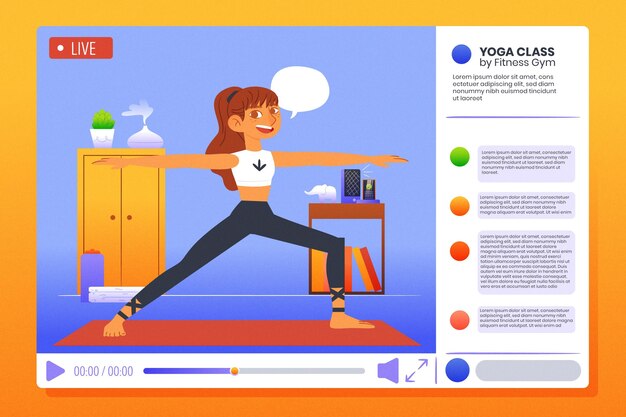
Yoga offers numerous health benefits, making it an excellent addition to a daily routine. However, like any physical activity, it also carries a risk of injury if not practiced carefully. To help ensure a safe and fulfilling yoga practice, here are some practical tips to follow.
### Embrace Repetition to Build Confidence
Practicing the same yoga postures every day can help you master them over time. Repetition builds confidence and allows your body to become familiar with the movements, so you can perform them more effectively. Even if you focus on just two or three poses initially, consistent practice will make you feel more at ease and reduce the risk of injury. Over time, you’ll find yourself moving through these poses with ease, much like a seasoned yoga teacher.
### Start with Beginner Poses
Yoga isn’t about jumping into the most advanced poses right away. Begin with simpler, beginner-friendly movements to give your body time to adjust. Trying challenging poses too soon can lead to injuries. As with learning anything new, patience and regular practice will lead to gradual improvement. Taking your time ensures you safely build strength and flexibility.
### Balance Flexibility with Strength
Yoga isn’t just about flexibility—it also requires strength to support your muscles and joints. Stretching alone isn’t enough if your body lacks the strength to hold poses properly. Balanced muscle engagement prevents strain or injuries during practice. Incorporate strength-building exercises into your routine to complement your increasing flexibility and reduce the risk of injury.
### Use Props for Extra Support
Props like blocks, straps, and cushions can provide extra stability and help prevent unnecessary strain. They are especially helpful when transitioning between poses or trying something new. Beginners and those experimenting with modified asanas can rely on props to make sessions safer and more enjoyable. By using props wisely, you can focus on perfecting your poses while minimizing discomfort or risk.
### Keep a Consistent Routine
To improve at yoga and stay safe, consistency is key. Even dedicating just 15 minutes a day can make a significant difference. Long breaks can cause your body to lose flexibility and strength, increasing the chances of injury when you return to practice. Staying consistent helps your body maintain progress and keeps your movements fluid.
### Plan a Logical Sequence of Poses
Organize your yoga session with a thoughtful flow of poses. Start with more vigorous postures and follow them with restorative poses to give your body a chance to recover. This sequencing helps avoid exhaustion or soreness and ensures a sustainable practice. If needed, consult instructional videos or a yoga teacher for guidance on sequencing.
### Incorporate Inversions
Inversions, when done correctly, can bring dynamic benefits to your practice. These poses, which shift your body’s orientation, encourage better blood flow and release feel-good hormones, keeping your mood and energy high. While inversions may seem difficult at first, consistent effort and gradual improvement will help you master them without strain or injury.
### Avoid Excess Pressure on Joints
Yoga poses often require body stretching, but make sure you’re not putting too much pressure on your joints, such as elbows and knees. Distribute your weight evenly across muscles rather than relying heavily on individual joints. A slight bend in your elbows and knees will protect these areas and help you avoid pain or injuries during and after practice.
### Approach Challenging Poses Cautiously
Complex poses, such as inversions and arm balances, take time and effort to master. Attempting them too soon or without proper guidance increases the risk of injury. Be patient and work gradually toward achieving these poses, seeking help from a trained instructor if needed. Ensure enough space around you in case you lose balance and always listen to your body when attempting new challenges.
### Don’t Push Yourself Too Hard
It’s important to respect your body’s limits. Overexerting yourself can strain muscles and tendons, leading to potential injuries. Rest when you need to, and include breathing exercises or meditation to help your body recover and relax between poses. If you have any existing health issues or have recently had surgery, consult your doctor before starting yoga.
By following these tips, you can make yoga a safe and rewarding part of your routine, gaining all its physical and mental benefits while minimizing risks.